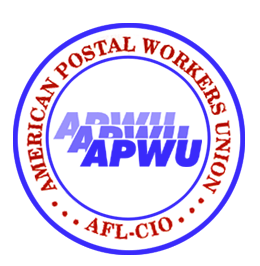USPS & APWU Questions and Answers:
Use of PTFs in AO Installations
The following questions and answers represent the mutual understanding and agreement of the APWU/USPS concerning part-time flexible clerk craft employees who are required to work outside their home office.
This agreement covers, but is not limited to, part-time flexible clerk craft employees who are required, as a condition of employment, to work in installations other than their home office (national case Q90C-4Q-C 93034651). This agreement is not applicable and is without prejudice to the position of either party regarding the assignment of other crafts and/or categories of employee outside their home office.
Doug A. Tulino, Manager, Labor Relations Policies and Programs
James "Jim" McCarthy , Director, Clerk Craft, APWU, AFL-CIO
QUESTIONS
- Does requiring a part-time flexible clerk to work in more than one installation violate the National Agreement?
- How are part-time flexible clerks scheduled when they are required to work outside their home office?
- How are part-time flexible clerks selected to work in other installations?
- Is management required to post an advance schedule for part-time flexible clerks assigned to work outside their home office?
- May part-time flexible clerks working in more than one installation be required to work more than twelve hours in a service day?
- Which office should an employee contact when reporting an unscheduled absence?
- Which office should an employee contact when reporting an unscheduled absence?
- What is the minimum number of hours in a service day that part-time flexible clerks can be scheduled or requested to work?
- How is the work hour guarantee determined when a part-time flexible clerk is assigned to work in a different office?
- When does the guarantee take effect?
- Does a part-time flexible clerk who returns to work on the same day receive another guarantee period?
- May part-time flexible clerks be assigned to work overtime outside their home office?
- Does a home office part-time flexible clerk receive a preference for work hours over a part-time flexible clerk from another installation?
- Does scheduling a part-time flexible clerk to another office impact leave percentages contained in the Local Memorandum of Understanding (LMOU) in the scheduled employee's home office?
- In which office are part-time flexible clerks considered for holiday scheduling under Article 11.6 of the National Agreement?
- May part-time flexible clerks be assigned to work in offices where full-time regular employees have been excessed?
- How is a part-time flexible clerk's relative standing on the part-time flexible roll determined when assigned to another office?
- Is there a requirement that a part-time flexible clerk receive a sixty-day notice pursuant to Article 12.5.B.5 prior to being temporarily assigned to work in another office?
- Do the work hours of a part-time flexible clerk from another installation count for the purpose of maximization under Article 7.3.B of the National Agreement?
- Do part-time flexible clerks receive payment for travel time and/or mileage when required to travel to other offices?
- How should compensable travel time be documented?
- How do part-time flexible clerks who are required to work in other installations submit requests for mileage reimbursement?
- Is there a limit on the number of miles part-time flexible clerks may be required to travel when assigned to another installation?
- Is there a limit on the number of flexible credits that may be assigned to a part-time flexible clerk?
- May a part-time flexible clerk working in more than one installation have financial accountabilities which require POS, IRT and/or manual PS Form 1412?
- May a part-time flexible clerk who is working in more than one installation be assigned more than one scheme?
- What determines the location of an employee's "immediate supervisor" and "certified steward" for the purposes of Article 15.2, Step 1?
ANSWERS
- No, part-time flexible clerks may be assigned to work in offices outside their home office (the "Employ Office" identified on PS Form 50) provided such assignment is otherwise consistent with the National Agreement.
Back to Top
- The home office postmaster or designee is responsible for scheduling the work location and starting time. The postmaster or designee in the actual work location is responsible for determining the number of hours worked.
Back to Top
- Several factors are considered such as the required skills, availability of the part-time flexible clerks, other scheduling and leave commitments, when the request was made, etc. Such scheduling may not be made in an arbitrary manner.
Back to Top
- No. The posting of an advance schedule for part-time flexible clerk craft employees is not required, unless by mutual agreement at the local level. Conversely, there is no contractual requirement or intention that obligates part-time flexible employees to remain at home or to call the post office to determine whether their services are needed. Accordingly, posting an advance schedule for part-time flexible clerks may be mutually beneficial. It is noted that posting an advance schedule for part-time flexible clerks does not create a contractual work hour guarantee, as all part-time flexible employees are assigned to a flexible schedule which is subject to change according to business needs.
Back to Top
- Such scheduling must be consistent with Section 432.32 of the Employee and Labor Relations Manual which states in relevant part:
Except as designated in labor agreements for bargaining unit employees or in emergency situations as determined by the postmaster general (or designee), employees may not be required to work more than 12 hours in 1 service day. In addition, the total hours of daily service, including scheduled workhours, overtime, and mealtime, may not be extended over a period longer than 12 consecutive hours.
Back to Top
- Employees must contact the office where they are scheduled to work on the day of the absence. The postmaster or designee of that office is responsible for completing PS Form 3971, notifying the employee’s home office of the absence, and forwarding the PS Form 3971 to the home office.
Back to Top
- The postmaster or designee in the office where the employee is working is responsible for acting on incidental leave requests; however, such leave should be coordinated with the home office postmaster or designee.
Back to Top
- When working in installations with more than 200 man years of employment, the Article 8.8.C guarantee is four hours. When working in installations with 200 or less man years of employment, the Article 8.8.C guarantee is two hours.
Back to Top
- The Article 8.8.C guarantee is determined by the size of the office where the work is performed, not by the employee’s home office.
Back to Top
- When the employee reports to work as scheduled. No guarantee applies when the employee is notified prior to reporting to work that the previously scheduled workday is canceled.
Back to Top
- It depends on the circumstances. The following guarantees apply regardless of whether an employee works in more than one installation during the guarantee period:
When an employee completes a scheduled tour and clocks out, then is notified to clock in and resume working, that is considered a callback. All career bargaining unit employees are guaranteed 4 hours work, or pay, if called back to work on a day when they have completed their assignments and clocked out. This guarantee is applicable to any size office. (See ELM Exhibit 432.62).
When a part-time flexible employee is notified prior to clocking out that he or she should return within 2 hours, it is considered a split shift and no new guarantee applies. However, if prior to clocking out, the part-time flexible employee is told to return after 2 hours, that employee (in any size office) must be given a minimum of 2 hours work.
When an employee works in two installations with different work hour guarantees during a single guarantee period, the employee receives the higher guarantee (four hours rather than two hours).
Back to Top
- Yes, however, overtime work in a specific work location must first be assigned to qualified and available clerk craft employees on the overtime desired list in that work location, as defined under Article 8, Section 5 of the National Agreement and, when applicable, the Local Memorandum of Understanding.
Back to Top
- Yes, during the course of a service week management is required to make efforts to assign qualified and available home office part-time flexible clerks to straight time hours before assigning such work to employees from other installations.
Back to Top
- No. Part-time flexible clerks are considered in the home office when calculating any leave percentages required under the LMOU regardless of whether they are detailed to another office. Part-time flexible clerks are not considered for the purpose of calculating leave percentages outside their home office. Also, requests for choice vacation periods and advance requests for incidental leave are controlled by the part-time flexible employee’s home office LMOU and the applicable provisions of the National Agreement.
Back to Top
- In the home office. While not required, part-time flexible clerks who are not scheduled in their home office may be scheduled to perform holiday work in another office after qualified and available part-time flexible clerks from that office.
Back to Top
- Yes, however such employees cannot be used to wholly replace full-time employees who were excessed.
Back to Top
- The employee remains on the part-time flexible roll of the home or “Employ Office” as determined by the employee’s PS Form 50.
Back to Top
- No, the sixty-day notice is relevant only when an employee is excessed from his/her home office pursuant to the provisions of Article 12 of the National Agreement. It is not applicable to temporary assignments.
Back to Top
- Yes, the part-time flexible clerk’s hours are counted in the office where the work is performed. For the purposes of conversion under the Full-Time Flexible Memorandum, only the hours worked in the home office by the individual part-time flexible clerk count.
Back to Top
- It depends on the circumstances. Whether a part-time flexible clerk who is required to work outside his/her home office is entitled to compensable travel time or mileage is determined by applying the applicable provisions of Section 438 of the Employee and Labor Relations Manual (ELM) and Chapter 7 of Handbook F-15.
Back to Top
- In accordance with Section 260 of Handbook F-21.
Back to Top
- By properly completing PS Form 1164 or PS Form 1164e and submitting it to the home office postmaster or designee on a weekly basis.
Back to Top
- Normally, such employees will not be required to travel more than 50 miles from their duty station.
Back to Top
- No, however, Part 426.63 of the F-1 Handbook states that postmasters or supervisors should cancel stamp credits not used at least once in an AP (accounting period).
Back to Top
- Yes.
Back to Top
- Yes, however, Part 310 of Handbook M-5 states that scheme assignments may be made when management has a reasonable expectation that employees will work a scheme for at least 30 hours within an accounting period.
Back to Top
- Normally, a Step 1 grievance will be investigated and/or discussed at the location the grievance is alleged. However, there may be circumstances where this is not feasible. In these situations a grievance may be initiated in the employee's home office.
Back to Top

